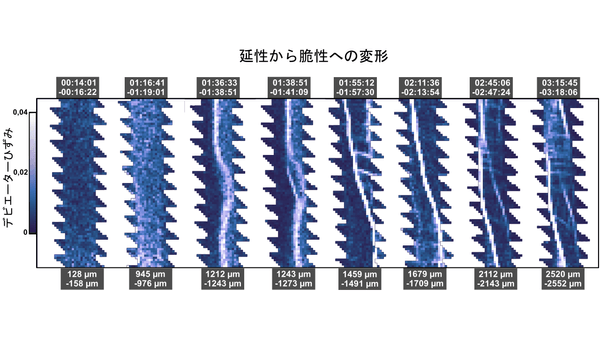Presentation Information
[S3-07]Seeing fault failure in real time: s4DμCT of gypsum dehydration
Nick Harpers1, Florian Fusseis1, *Eranga Gayanath Jayawickrama1 (1. RWTH Aachen Univ.)
Keywords:
s4DμCT,Dehydration,Shear
Synchrotron-based 4D microtomography (s4DμCT), the time-resolved extension of three-dimensional X-ray computed microtomography, offers a non-invasive way to visualize and quantify internal microstructural changes during dynamic processes. Utilizing the progression in synchrotron radiation, fast detectors, and digital volume correlation (DVC), this technique enables high-resolution imaging and quantification of evolving systems under controlled mechanical, thermal, and chemical conditions. In this study, we apply s4DμCT to investigate the syn-deformational dehydration of gypsum in a direct-shear experiment. This experiment can be considered an analogue for serpentine dehydration in subduction zones. The process involves complex hydraulic, mechanical, and chemical (HMC) interactions that remain poorly understood, especially under shear stress. We conducted a series of operando direct shear experiments on high-purity gypsum powders using the x-ray transparent Heitt Mjölnir rig at the ID19 beamline of the European Synchrotron Radiation Facility (ESRF). These experiments captured the real-time evolution of microstructures during dehydration, under conditions of 10 MPa confining pressure, 2 MPa fluid pressure, and heating from 60 °C to 125 °C, with concurrent shear strain applied at a constant displacement rate. s4DμCT imaging allowed us to discriminate between gypsum, hemihydrate, and pore space with high fidelity, providing insights into the spatial and temporal evolution of deformation structures such as Riedel shears, compaction bands, and boundary shears. Our analyses use DVC to resolve grain-scale deformation and reaction rate during coupled deformation and dehydration in the s4DµCT data. The initial results demonstrate a clear link between microstructural changes and variations in frictional and transport properties. These findings underscore the power of s4DμCT in capturing the feedback between chemical reactions and hydro-mechanical behavior during shear, with broader implications for understanding fault zone processes. Future work will extend to other lithologies and focus on quantifying rate-and-state friction to better characterize sliding stability in deforming systems.

